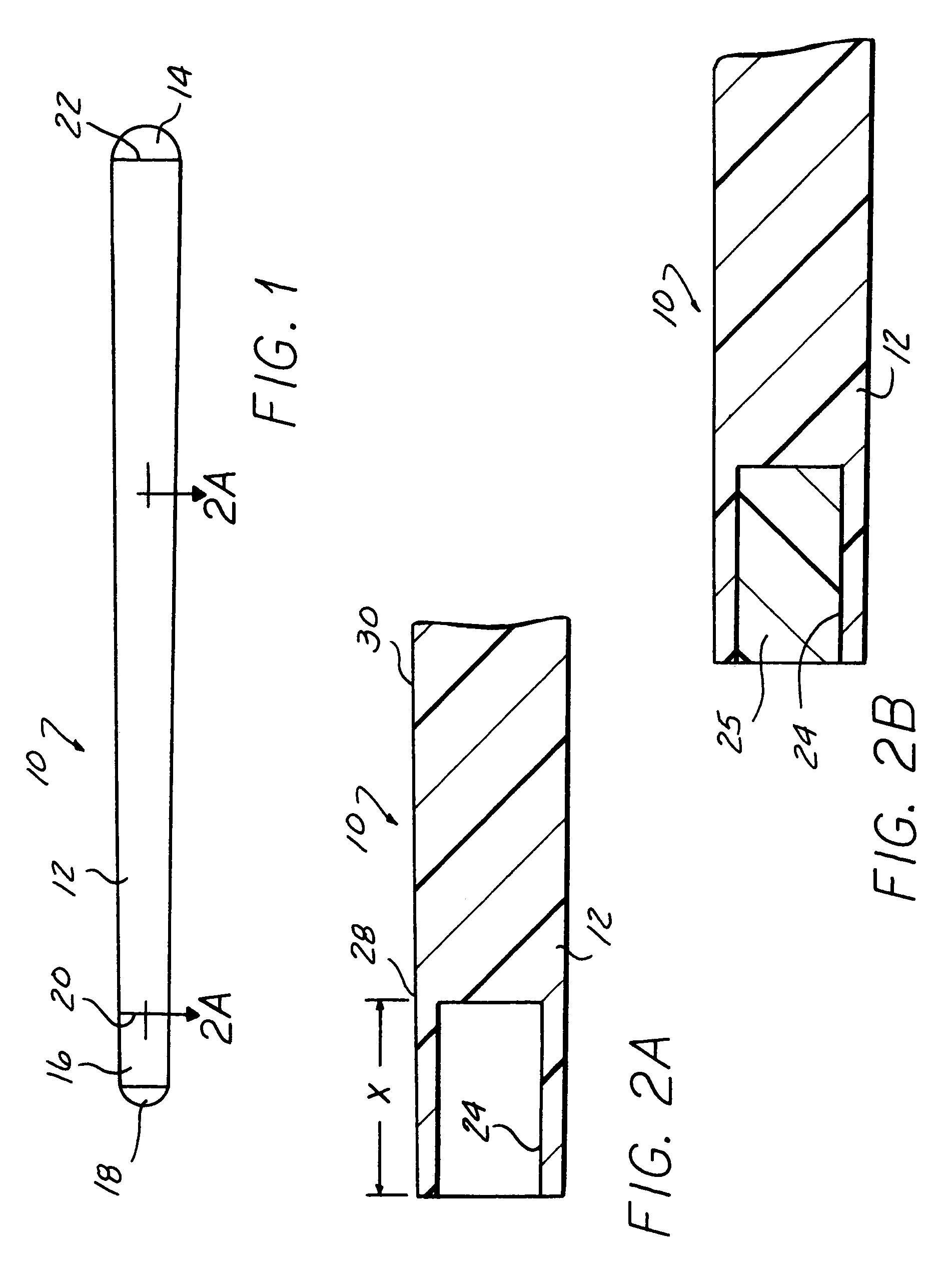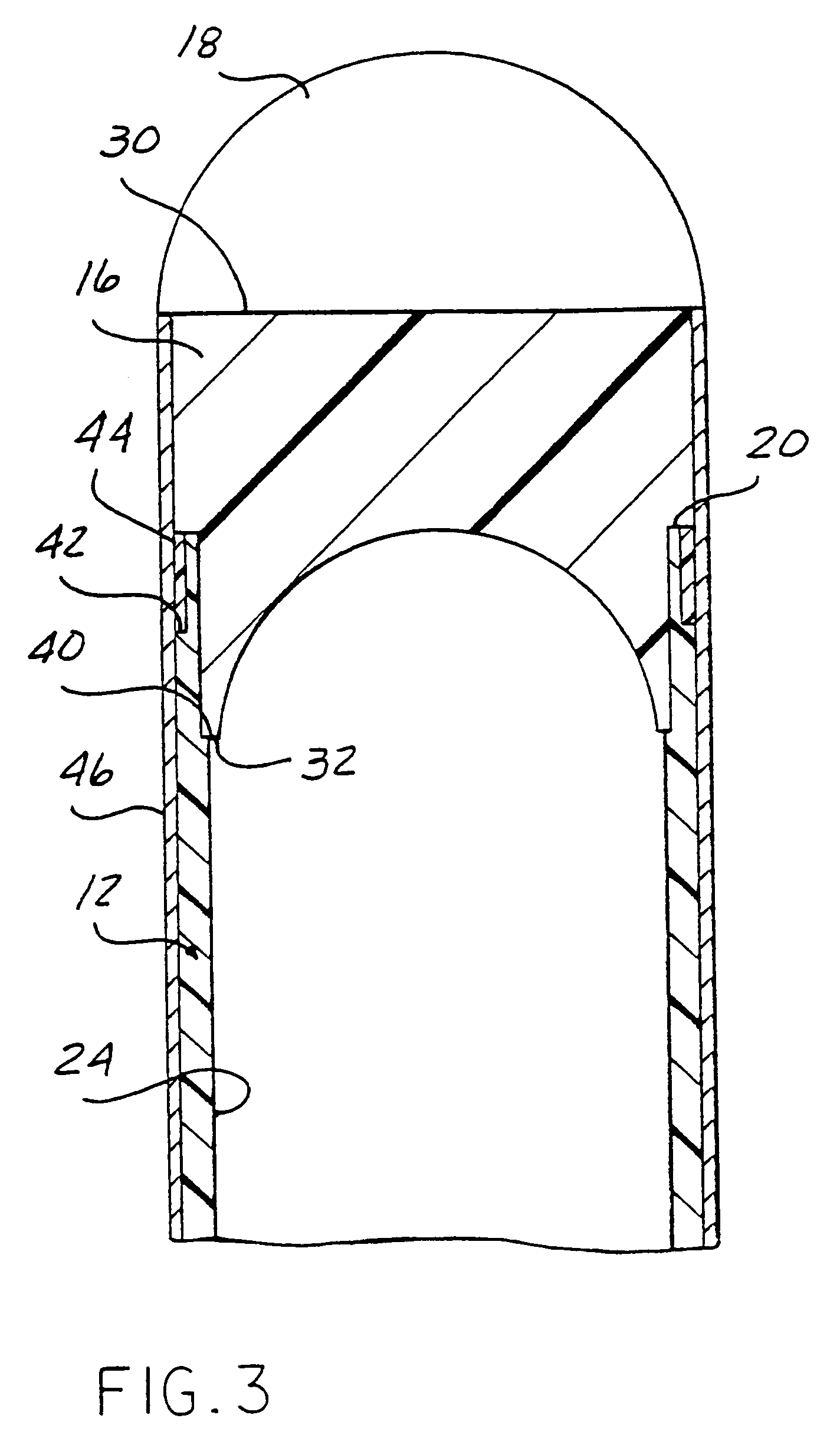Billiard cue
a cue ball and cue shaft technology, applied in the field of cues, can solve the problems of large and more undesirable deflection of the cue ball, and achieve the effects of reducing stiffness of the shaft, and reducing mass or weigh
- Summary
- Abstract
- Description
- Claims
- Application Information
AI Technical Summary
Benefits of technology
Problems solved by technology
Method used
Image
Examples
Embodiment Construction
[0029]Referring now to the drawing, and to FIGS. 1 and 2A in particular, there is depicted a billiard / pool cue 10 constructed in accordance with the teachings of the present invention.
[0030]As shown in FIGS. 1-3, the cue 10 includes a shaft 12, a butt end 14, a ferrule 16 and a tip 18. The shaft 12 may be formed of a single elongated member or two short members which are coaxially joined together.
[0031]The shaft 12 has a first end 20 on which the ferrule 16 is mounted, as described hereinafter and an opposed second end 22 to which the butt 14 is mounted in a conventional manner. A bore 24 extends through the shaft 12 at least for a predetermined distance from the first end 20. Alternately, the bore 24 of the same or different diameter may extend for the entire length of the shaft 12 between the first and second ends 20 and 22. Although an exterior surface 26 of the shaft 12 may be formed with either American or European tapers, the inner diameter or I.D. of the bore 24 can remain co...
PUM
| Property | Measurement | Unit |
|---|---|---|
| thickness | aaaaa | aaaaa |
| thickness | aaaaa | aaaaa |
| diameter | aaaaa | aaaaa |
Abstract
Description
Claims
Application Information
 Login to View More
Login to View More - R&D
- Intellectual Property
- Life Sciences
- Materials
- Tech Scout
- Unparalleled Data Quality
- Higher Quality Content
- 60% Fewer Hallucinations
Browse by: Latest US Patents, China's latest patents, Technical Efficacy Thesaurus, Application Domain, Technology Topic, Popular Technical Reports.
© 2025 PatSnap. All rights reserved.Legal|Privacy policy|Modern Slavery Act Transparency Statement|Sitemap|About US| Contact US: help@patsnap.com



